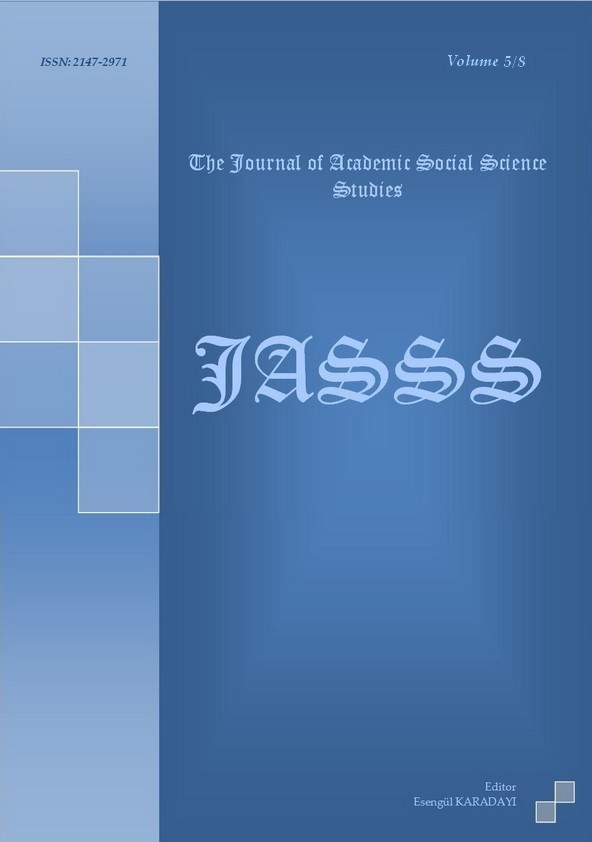Author :
Abstract
Orhan Pamuk’un “Yeni Hayat” romanı postmoderni “görüntü”nün bilinci ve postmodern özneyi görüntü bilincinin kurduğu sahte merkez konumunda tanımlayan bir “kendi bilincini” arayış romanıdır. Romanda sahte merkezler kurulmuş bilinç alanları ve bu bilinç alanının kurduğu yaşamlar da kopyalanmış yaşamlar olarak ele alınmaktadır. Romandaki kopya yaşamlar, kopyalanmış bilinç ve biyonik insan ilişkisini ortaya koymaktadır. “Yeni Hayat” kendi bilincini kaybeden öznenin onu kaybettiği yeri postmodernin kendi kurgu bilinci ve “öteki”ni öznenin bilincine sızan ve onu kuran ikincil unsurlar konumunda ortaya koymaktadır. Romandaki arayış sanatı öznenin kendi bilincini ötekilerden ayıklama, arındırma ona ulaşma deneyimi olarak tanımlanmaktadır. Kaosun ötekilerin alanına karışan kendi hikâyesi ve bilinci olduğu romanda kopya ve biyonizmin karşısına öznenin kendi gerçek, özgün hikâyesinin konulması bunun için de kendi gerçeğinin ötekilerin alanından ayrılması süreci anlatılmaktadır. Yeni Hayat’ta hafıza kopyayla aslın ayırt edilmesinde tek ölçüt kabul edilmekte, bilincin asılla ve kopyayla ilişkisinin merkezine yerleştirilmektedir. Hafıza insanı kendine benzeyen en yakın kopyadan ayıran, şeyleri anlamlandırma sürecinde kişiselliğin tek ölçütü olarak ortaya konulan kişiye özgü bellektir. Bu nedenle romanda öznenin kurulmasında kopyalaşma süreci hafızayla ilişkilendirilmektedir. Hafıza, kopyanın aslın yerini aldığı, kişisel yaratmanın kopya yaratmaya dönüştüğü, özgünlüğün kaybedildiği, yolculuk sürecinde asıla ulaşmak için kopyadan temizlendiği merkezdir. Bu nedenle Yeni Hayat kişisel hafızanın bulunması yolculuğudur. Bu konumuyla Yeni Hayat’ta postmodern özne bilinci başkalarınca kurulmuş bir bilinçsizlik durumunun adıdır.
Keywords
Abstract
The “New Life” novel of Orhan Pamuk is a novel of searching for “its own consciousness” describing postmodern in the status of the consciousness of “image” and postmodern subject in the status of the false center constructed by the image consciousness. Consciousness areas with constructed false centers and the lives constructed by this consciousness area are considered as copied lives in the novel. The copied lives in the novel present the relationship between copied consciousness and bionic human. “New Life” presents the place where “the subject lost its own consciousness, the own fiction consciousness of the postmodern and the “other’s” in the status of secondary elements leaking into the consciousness of the subject and constructing it. The searching art in the novel is described as the experience of picking its own consciousness among others, purifying it and reaching to it. In this novel, chaos is its own story and consciousness interfusing in other’s area. In this novel, to put the own true and original story of the subject instead of copy and bionizm is told and the process of separation of its own truth from other’s area for this purpose is told. In New Life, memory is accepted as the only criteria in distinguishing copy and original and is placed at the center of the relation of conscience with copy and original. Memory is a personal storage that distinguishes the human from its most resembling copy and that is placed as the only criteria of personality in the process of interpreting things. Therefore, the process of copying during the creation of the subject is associated with memory in the novel. Memory is the center in which the copy takes the place of the original, personal creation becomes creating copies and where it is cleaned from the copy to reach the original during the process in which originality is lost. Therefore, New Life is the trip to find the personal memory.





